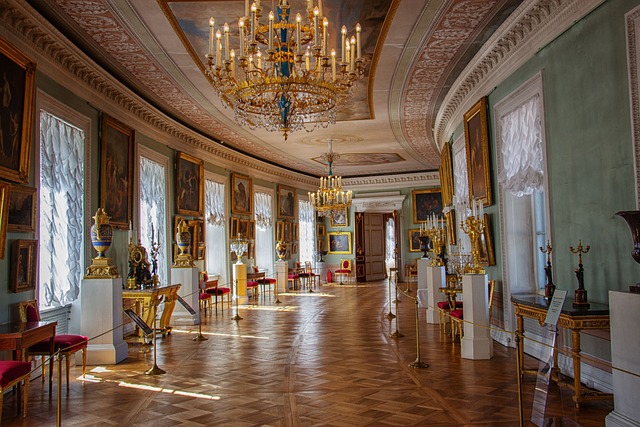Unveiling History: The Secrets of a Tour Museum
In a world overflowing with technology and rapid advancements, the unceasing allure of history remains tantalizingly present. Museums stand as monumental repositories that not only preserve artifacts but also tell the profound stories of our past. Among these, tour museums hold a unique charm, inviting visitors to delve deeper into history through curated exhibitions, interactive displays, and compelling narratives.
The Essence of a Tour Museum
Tour museums, often located in areas of historical significance, do more than exhibit objects; they create immersive experiences that engage visitors in a dialogue with history. These museums are designed to cater to tourists, local communities, historians, and students alike. Unlike traditional museums, which may focus primarily on passive observation, tour museums tend to offer guided experiences that breathe life into the artifacts and encourage exploration.
Most tour museums are enriched with knowledgeable guides whose passion for history brings stories to life. These educators weave narratives that connect the past with the present, illustrating how historical events shape our current realities. By understanding the context and significance behind each artifact, visitors often leave with a deeper appreciation for history.
Secrets Behind the Exhibits
Every artifact within a tour museum carries a unique story, but behind each exhibit lies a treasure trove of secrets waiting to be uncovered. From the careful curation process to the stories that aren’t often told, several layers construct the museum experience.
Curatorial Choices
Curators possess a daunting responsibility: not only must they select artifacts that resonate with the museum’s theme, but they must also ensure that these items are presented in a manner that captivates the audience. This involves a meticulous process of research, preservation, and contextualization. Curators often have to sift through thousands of potential items, narrowing down selections based on historical significance, rarity, and potential public interest. However, the story doesn’t end with mere selection; the narrative constructed around the chosen artifacts often involves extensive research.
Preservation Techniques
Many people who visit museums might not realize the intensive work that goes into preserving artifacts. Conservationists use advanced techniques to ensure that items do not degrade over time. From controlling humidity and temperature to utilizing UV-filtering materials, the museum’s environment is meticulously managed. Such efforts are integral to preserving fragile pieces of history, whether they are ancient manuscripts, textiles, or even dinosaur bones.
Hidden Narratives
While the visible elements of a museum exhibit present a well-curated story, many fascinating narratives often go untold. Beneath the surface, every artifact can reveal layers of cultural, social, and economic nuances that provide a more vivid picture of the past. By taking guided tours, visitors can often learn about these hidden histories. Some tours showcase underrepresented voices and challenge hegemonic narratives by including perspectives from marginalized communities, illuminating broader societal contexts.
The Role of Technology in Enhancing Visitor Experience
In recent years, technology has revolutionized how tour museums engage their audiences. Multimedia presentations, interactive displays, and applications have transformed traditional museum visits, allowing for a more dynamic interaction with exhibits.
Interactive Exhibits
Many modern tour museums feature interactive exhibits that allow visitors to engage with historical content actively. From virtual reality experiences that transport visitors to pivotal historical moments, to hands-on activities that mimic historical practices, these innovations offer a fresh way to experience the past.
Augmented Reality**
Augmented reality (AR) has emerged as a powerful tool for tour museums. Through mobile applications, visitors can point their devices at certain artifacts to uncover additional information, animations, or even first-hand accounts related to the object. This layered approach enriches their understanding of the item’s significance and context.
Educational Initiatives: Bridging the Past and Present
One of the core missions of tour museums is to educate. Many institutions organize programs and workshops that extend the museum experience beyond traditional visits. Engaging with schools, universities, and local communities, they provide educational resources that foster a deeper understanding of historical events.
Workshops often focus on hands-on learning, allowing participants to recreate ancient techniques, from pottery making to weaving. Such activities foster a greater appreciation for the skills involved in creating historical artifacts, creating a tangible connection to the past.
Walking Through Time: The Architectures of Tour Museums
The design and layout of a tour museum are often as significant as the exhibits themselves. The architecture reflects the era it depicts, inviting visitors not only to look at history but to step into it. From grand historical buildings that house exhibits to modern constructions that integrate natural elements with exhibition spaces, the aesthetics of the museum contribute immensely to the overall experience.
A well-designed tour museum guides visitors through a chronological journey, often unfolding stories in a seamless narrative. This architectural storytelling invites individuals to move slowly, reflect, and absorb the enormity of events and lives that once were.
The Social Impact of Tour Museums
Tour museums play a vital role in community engagement and development. By providing a space for dialogue about historical events and their contemporary implications, they foster community understanding and cohesion. This is particularly true for museums that focus on underrepresented histories, creating a platform for discussions about social justice and human rights.
Additionally, tour museums contribute to local economies. They attract tourists, boosting local businesses and promoting cultural exchanges. The economic impact often supports not only the museum’s operations but also reinforces the cultural fabric of the area, encouraging locals to take pride in their heritage.
Challenges Faced by Tour Museums
Despite their significance, tour museums face numerous challenges in today’s society. Funding cuts, changing visitor demographics, and the pressure to constantly innovate present hurdles that can impact their operations. Many institutions struggle to maintain relevant programming while preserving their core mission of education and engagement.
Moreover, the digitization of information and the rise of online platforms for education mean that they must continually adapt to retain their audiences. This shift has pushed many museums to creatively explore hybrid models that blend physical visits with digital outreach, ensuring that they reach a broader audience beyond geographic limitations.
Conclusion: The Continuing Journey of Discovery
Visiting a tour museum is more than just observing artifacts; it is a journey through time. Each visit offers the chance to uncover secrets, engage with history, and join a conversation that spans generations. These institutions harbor the past, presenting it in a way that inspires future generations. The secrets of a tour museum are not confined to the artifacts on display; they encompass the human stories, the emotions, and the lessons drawn from our collective experience.
As we step into the future, embracing innovation while respecting tradition, tour museums stand at the forefront of historical engagement. They invite all to explore, learn, and reflect on the many facets of history that shape who we are today. The journey of discovery continues, exciting for what lies within the next exhibit, waiting to be unveiled.


